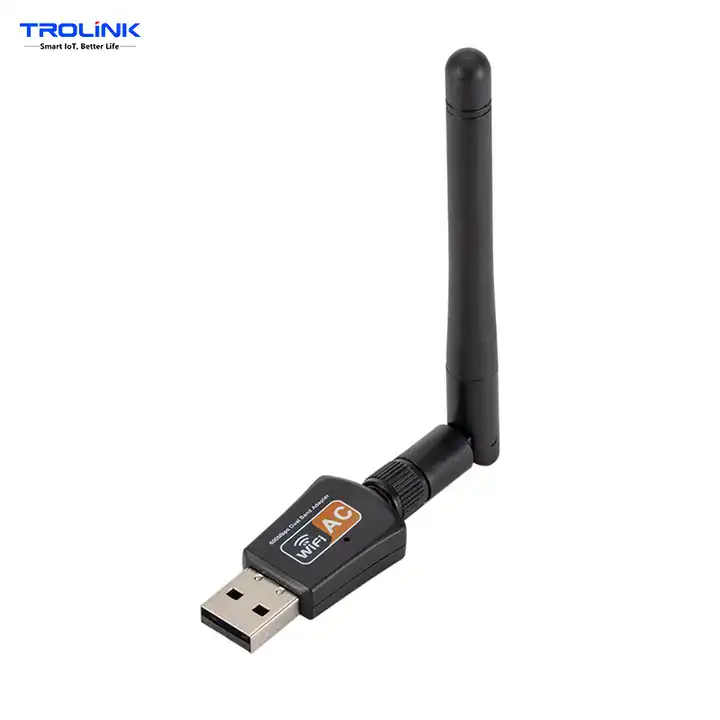In today's connected world, reliable internet access is crucial for both work and leisure. Whether you're streaming your favorite shows, participating in a video conference, or browsing the web, having a stable and fast WiFi connection can make all the difference. Two primary options for connecting devices to the internet are built-in WiFi and WiFi dongles. Each has its advantages and disadvantages, making it important to understand which is better suited for your needs.
Understanding Built-In WiFi
Built-in WiFi refers to the wireless networking capability that is integrated into a device, such as a laptop, smartphone, or smart TV. Devices with built-in WiFi come with an internal wireless adapter that allows them to connect to a WiFi network without the need for any additional hardware.

Advantages of Built-In WiFi:
1.Convenience: Since the WiFi adapter is built into the device, there's no need to carry around or connect external hardware. This makes it ideal for people who prefer a clutter-free setup.
2.Ease of Use: Connecting to a WiFi network with built-in WiFi is usually straightforward, with most devices automatically detecting available networks.
3.Port Availability: Built-in WiFi doesn't occupy any of your device's USB ports, leaving them free for other peripherals.
Disadvantages of Built-In WiFi:
1.Limited Upgradability: If the built-in WiFi becomes outdated or starts to malfunction, upgrading or replacing it can be challenging, especially with devices like laptops where the wireless card is often soldered to the motherboard.
2.Range and Performance Limitations: Built-in WiFi adapters, particularly in older or budget devices, may not offer the best range or fastest speeds, especially when compared to modern external adapters.
Understanding WiFi Dongles
A WiFi dongle is a small external device that plugs into a USB port, providing wireless internet access to the device it's connected to. WiFi dongles are also known as USB WiFi adapters.
Advantages of WiFi Dongles:
1.Upgradability: WiFi dongles are easy to replace and upgrade, allowing users to take advantage of the latest wireless technology without having to buy a new device.
2.Improved Performance: Many WiFi dongles offer better performance compared to built-in WiFi adapters, with features like dual-band support, external antennas, and compatibility with faster WiFi standards (e.g., WiFi 6).
3.Portability: WiFi dongles are small and portable, making them a convenient option for people who need reliable internet access on multiple devices.
4.Flexibility: With a WiFi dongle, you can add wireless capability to devices that don’t have built-in WiFi, such as desktop computers or older laptops.
Disadvantages of WiFi Dongles:
1.USB Port Usage: A WiFi dongle occupies one of your device's USB ports, which could be a drawback if you have limited USB ports available.
2.Potential for Loss: Due to their small size, WiFi dongles can be easily misplaced or lost.
3.External Hardware: Some users may find it inconvenient to have an external device attached to their laptop or desktop, especially if they frequently move their device around.
Which Is Better for You?
The choice between built-in WiFi and a WiFi dongle largely depends on your specific needs and preferences.
For Everyday Users: If you have a modern device with a reliable built-in WiFi adapter and you mostly use it in environments with strong WiFi signals, built-in WiFi may be sufficient.
For Power Users and Gamers: If you're looking for maximum performance, upgradability, and the ability to connect to the latest WiFi networks, a high-quality WiFi dongle could be the better option.
For Users of Older Devices: If you're using an older device with outdated built-in WiFi, a WiFi dongle is an easy and cost-effective way to boost your internet connectivity.
For Flexibility: If you need to add WiFi capability to multiple devices, such as desktop PCs, a WiFi dongle offers flexibility and ease of use.
Ultimately, the decision comes down to your specific use case. Both built-in WiFi and WiFi dongles have their place in the world of wireless connectivity, and understanding their strengths and limitations will help you make an informed choice.
 Trolink Joint With Tuya to Make Iot Benefit Every Family
Trolink Joint With Tuya to Make Iot Benefit Every Family
 5 Key Indicators for WiFi Module Selection You Have to Know !
5 Key Indicators for WiFi Module Selection You Have to Know !
 IOT module is the brain of smart products
IOT module is the brain of smart products
 What is the signal coverage range of the WiFi module chip?
What is the signal coverage range of the WiFi module chip?